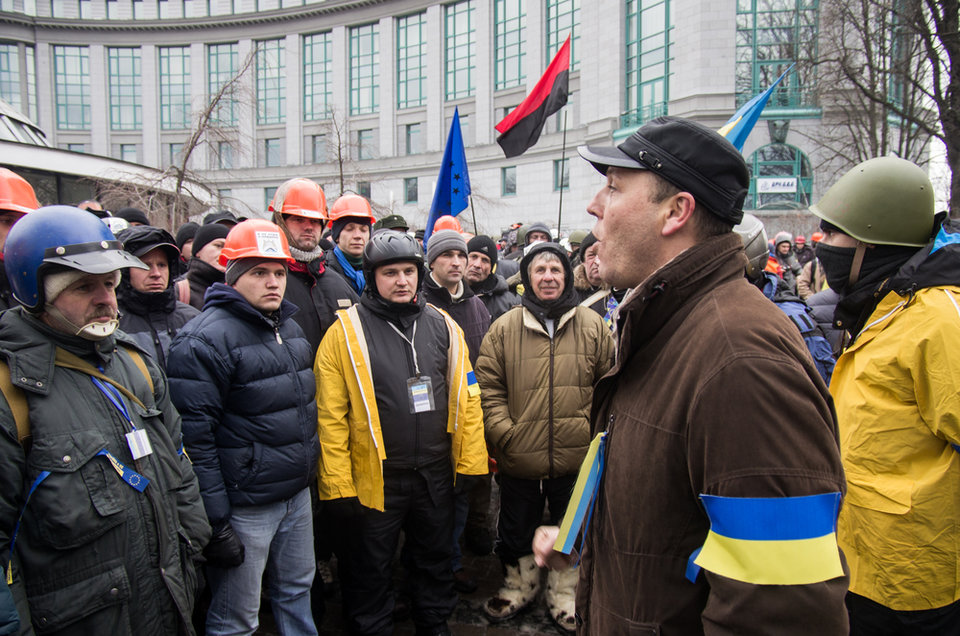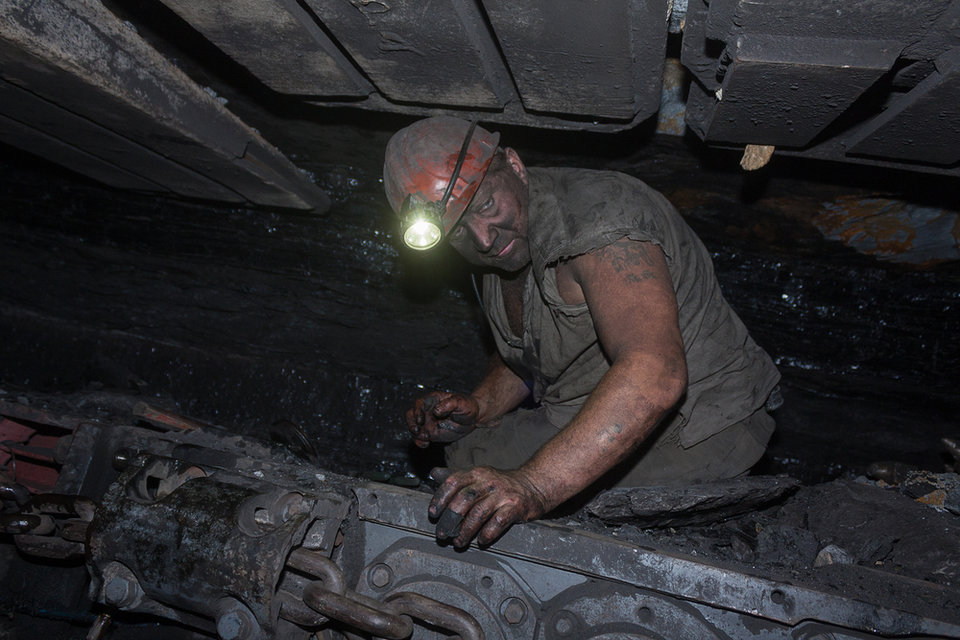Discovering new mining deposits with big data
US mineralogists and scientists are experimenting with machine learning and big data to discover new, potentially lucrative mineral deposits. Heidi Vella speaks to experts from the Deep Carbon Observatory to ask how their research might one day transform mineral exploration
Scroll down to read the article
Understanding more about mineral formations and physical properties has high value for academics, miners, material scientists and engineers alike. And while mineralogists and geologists have been studying the Earth’s crust for centuries, its sheer size and complexity means there is still much more to discover.
“Much of what we learn through material and atomic scale behaviour is through minerals, so it is important to know and characterise what is out there,” says Dr Shaunna Morrison, a mineralogist and planetary scientist at Carnegie Institution’s Geophysical Laboratory.
“When we have a good representation of the actual mineral inventory it can tell us a lot about the geologic past of our planet.”
To learn more and to learn quicker, experts have been experimenting with applying advanced data science techniques to mineralogy.
Last year, Morrison and her colleagues from the Deep Carbon Observatory – a community of over 1,000 scientists – published a paper that showed how network theory, which has previously been used to analyse the spread of disease, terrorist networks, and Facebook connections, can reveal mineral diversity and distribution worldwide.
The technique uses mathematical theory for organising, connecting and understanding data and can even predict minerals as yet unknown to science. But it’s the potential for finding new deposits that really shines.
Mineral discovery using data science
According to Morrison, the data science method that could be of the most interest to miners is the ongoing work using recommender systems – a mathematical data science algorithm for infinity analysis or ‘market basket’ analysis – to understand co-concurrent relationships.
This data science technique is routinely used by firms like Amazon to understand items frequently purchased together, information which is then used to suggest additional purchases for customers.
“Just like Amazon-purchasing co-occurs, so do minerals co-occur on Earth’s surface in a very systematic way, so this is something we can easily characterise,” she explains.
The US Geological Survey (USGS), Mindat.org and the Deep Carbon Observatory, among others, have large databases that include mineral evolution data, geospatial information, mineral occurrence frequency, age and more, which scientists can use to generate models of mineral co-occurrence around the world.
From this information, mineralogists can then determine which other locations have the highest probability of having a previously unknown deposit of a mineral or mineral assemblage.
“For example, if we know that a certain combination of mineral species signals that there is likely a deposit of interest, we can determine where that deposit is most likely to exist,” Morrison explains.
“We can even determine the probability, for example, that there is a 2% chance you will find it there and a 96% chance you will find it somewhere else: I think that is really interesting for mining companies and several have already shown interest.”
The data science method that could be of the most interest to miners is the ongoing work using recommender systems

Ukraine’s miners have protested for years against lack of funds for investment. Credit: LongJon/Shutterstock.
Data sharing is often considered off-limits within mining firms for competition reasons
Data sharing encourages smarter working
This work essentially extends on what is already being done by geologists and mineralogists, but on a much larger scale.
“In reality, we are not just looking at two parameters, but tens of thousands that affect a system – this is something that is really hard for any human brain to see in a spreadsheet or even using standard statistical methods,” says Morrison.
However, for advanced machine learning, using multi-varying techniques, a system can be characterised in an extremely multi-varied and multi-dimensional way.
“No one person can understand all the systems and go through all the data in a blink of an eye,” she adds.
By using these techniques, it is eventually hoped that mining companies will find commercially viable deposits much quicker and easier, and help them to know where they definitely shouldn’t be looking.
While algorithms can determine the probability of where certain deposits might be, they can’t yet determine how big they are.
This is something Morrison says they want to do in the future, but they will require more data.
“The issue is a lack of data on the amount of materials on Earth’s surface right now,” she says. “Mining companies have a lot of information but it is often held privately.”
Data sharing is often considered off-limits within mining firms for competition reasons. Yet Morrison believes if all data was shared it could ‘elevate everyone’ to work smarter.
“Mining companies are still going to have their competitive edge, whether that is buying-power or efficiency in operations or their location,” she adds. “Data is power and if we really want to understand where to explore and where not to we need to quantify everything.”
Data sharing is often considered off-limits within mining firms for competition reasons
More than half of the country’s coal mines are managed by pro-Russian separatist militia. Credit: DmyTo/Shutterstock.

Going deeper into the Earth’s crust
Scientists at the USGS are also doing similar work. The agency’s Gilpin R. Robinson Jr. says the USGS is “constantly looking for methods to improve how data is integrated and interpreted for better resource assessment work.”
The agency has large databases on regional sediment and soil chemistry, on geophysical data, some generated by satellite and airborne methods, and regional data sets on aeromagnetic, radiometric and regional variations in gravity.
Using these data sets, it is working to determine what minerals are in the deeper elements of the Earth’s crust, which could be potential targets for certain deposit types.
“Much mineral exploration has been successful on the Earth’s surface, and one of the biggest frontiers in the future is identifying deposits that are hidden under either sediments or other rock units that occur at some depth,” explains Robinson.
“That requires imaging and modelling of the characteristics of the subsurface, so some of our analysis for these big data sets is trying to interpret what the sub-surface units are.”
Scientists know that mineral deposits usually form where there are some elements of interest in the crust. This usually involves a process or event that transports or moves these elements, either via magmas in volcanic systems or crustal fluids that move through the crust and dissolve and transport metals.
Certain structures help focus those transport mechanisms, and then the fluids eventually get trapped and concentrated.
“We are trying to understand the data and put it altogether to find where this might have happened to identify regional targets,” explains Robinson.
The USGS is using geologic maps at a variety of scales that can be integrated together using machine learning and data science to derive insights faster and cheaper.
This work is particularly relevant for desert areas where sand covers minerals, and in the future could identify high probability targets for costly exploration efforts for commercial deposits deeper than one or two kilometres below the surface.
To further this research, the USGS has started working with Geoscience Australia, which is particularly interested in the research because the country has huge areas of sand-covered land that it wants to map and model.
One of the biggest frontiers in the future is identifying deposits that are hidden under sediments
One of the biggest frontiers in the future is identifying deposits that are hidden under sediments
[They] hope that mining companies will be more willing to work with academia in the future
Collaboration: exchanging people and knowledge
More and more academia and government organisations are looking to utilise data for better geological insights. Both the British Geological Survey and the Geological Survey of India are looking into doing this.
However, Morrison and Robinson hope that mining companies will be more willing to work with academia in the future through partnerships and exchanging of people and collaborations.
“We can undertake higher risk-reward work than mining companies, which is why these partnerships can be so powerful,” she says.
“I would love to send students to work at a mining company to really understand what it is they want, which we can then use to guide what we are doing,” she says.
This exchange of people and knowledge can be beneficial for miners and academics alike. For the price of a PhD student’s tuition and salary for a year, mining firms can get further valuable insights out of the investments they’ve already made collecting the data.
“That is a lot cheaper compared to drilling holes,” says Morrison. “Where you have data and you have questions, machine learning can help you answer those questions.”